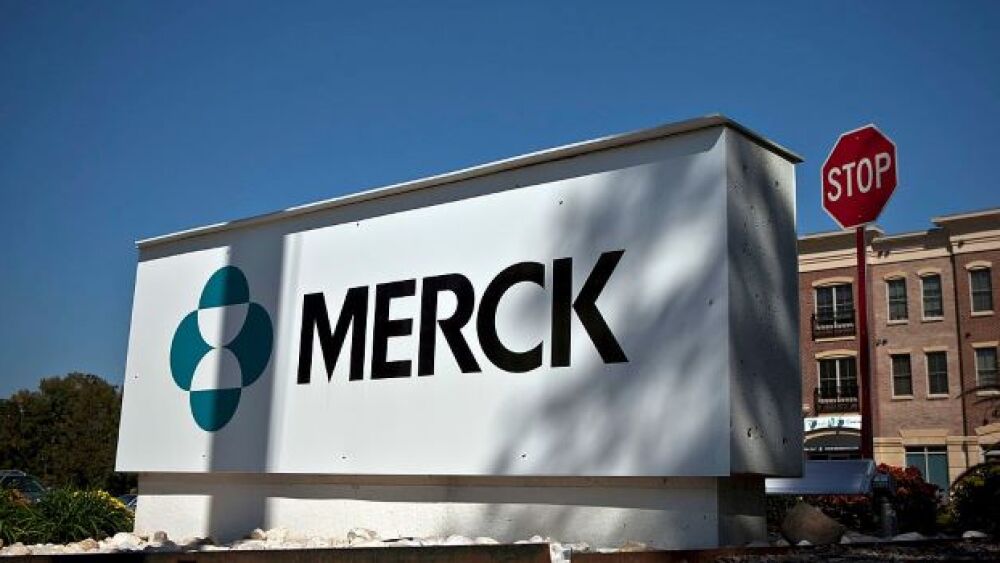This morning, Merck hosted a cardiovascular investment event where it touted the advances it’s made in its pipeline, which includes a portfolio that has tripled in size over the past year.
Kena Betancur/Getty Images
Merck’s cardiopulmonary pipeline is poised to deliver eight potential approvals over the next eight years, bolstering its pipeline and revenue. By mid-2030, the company anticipates revenue from its cardiovascular and pulmonary portfolio to generate more than $10 billion.
This morning, the pharma giant hosted a cardiovascular investment event where the company touted the advances it’s made in this area, which includes a portfolio that has tripled in size over the past year through clinical programs and business development deals.
Dean Y. Li, a cardiologist and president of Merck Research Laboratories, noted that cardiovascular disease is the leading cause of death across the globe. Despite all advances in research, he said cardiovascular disease is an epidemic. He noted that the disease has claimed the lives of more than 35 million people over the past few years. As science continues to advance, Li said there are new opportunities to address unmet needs in this space.
“Merck has created a broad, promising cardiovascular pipeline with the potential to build on our proud legacy in this important field of research, and we are deploying our unique development capabilities and expertise to advance these innovations to patients who need them,” Li said. “Merck has a storied legacy for developing therapies for cardiovascular needs. We are uniquely positioned to target cardiovascular morbidity,” Li said. “Merck has a storied legacy for developing therapies for cardiovascular needs. We are uniquely positioned to target cardiovascular morbidity.”
Li pointed to several new drugs that are expected to make a difference in cardiovascular patients, including the recently approved Verquvo and Adempas. Verquvo, which was co-developed with Bayer, was approved last year as the first treatment for chronic heart failure approved specifically for patients following a hospitalization for heart failure or need for outpatient IV diuretics.
Joerg Koglin, vice president of cardiovascular and respiratory, global clinical development noted that there Verquvo has room for expansion, including the reduction of the risk of death in complex systolic failure patients. If Verquvo hits the mark in the complex heart failure studies, Merck anticipates that the use of the drug will triple to a market of 12 million patients, Arpa Garay, chief marketing officer for Human Health said.
Merck also sees significant opportunity in the area of pulmonary arterial hypertension (PAH), a rare, rapidly progressing disease that is highly fatal. The company already has one asset in this area, Adempas, which it gained through a licensing deal with Bayer eight years ago. Last year, Adempas generated more than $1 billion.
Merck could see additional opportunities to treat PAH with sotatercept, a Phase III drug the company gained through the $11 billion acquisition of Acceleron. In clinical studies, sotatercept has demonstrated a marked ability to improve PAH patients. Li said sotatercept has the potential to be the first disease-modifying drug for PAH patients, which demonstrates a significant market potential.
In addition to sotatercept, Merck is also assessing MK-5475, an inhaled soluble guanylate cyclase (sGC) stimulator for the treatment of PAH. The company’s cardiovascular team noted that the inhaled formulation of sGC has the potential to provide more targeted exposure compared to oral sGCs. Last year, Merck initiated a Phase II/III PAH study with MK-5475.
Merck’s portfolio has the potential to transform the way PAH is treated, Garay said, stating that it has three important assets. The additional assets, should they be approved by regulatory agencies, are expected to generate significant revenue streams for the company. The portfolio is expected to be able to treat a wide number of PAH patients, Garay added.
The company also pointed to advances made in thrombosis in patients with end-stage renal disease (ESRD). Merck noted that there is a high burden of cardiovascular disease in patients with ESRD compared to the general population, which is why Merck is developing MK-2060. The company is selecting patients for a study that will assess two different doses of MK-2060, which is expected to be completed by this time next year. MK-2060 is the sole dual FXI/FXIa inhibitor in development for ESRD.
In atherosclerosis, a disease characterized by the build-up of cholesterol in the arteries, Merck is assessing MK-0616, a cyclic peptide that binds to PCSK9 enzyme, a validated therapeutic target in hypercholesterolemia (high cholesterol). Merck said MK-0616 has the potential to overcome barriers in the use of the PCSK9-aimed therapies. This will help more patients with hypercholesterolemia reach the goal of reducing LDL-C and the risk of cardiovascular events. Phase II data is expected in 2023, Koglin said.





